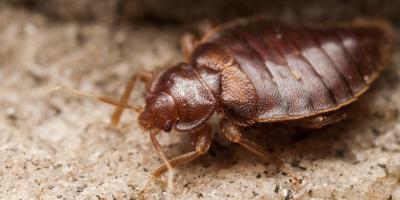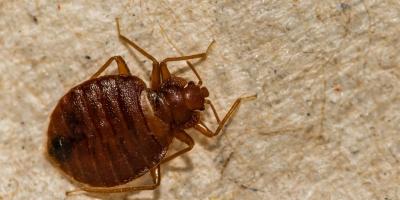How to Recognize Bed Bug Bites

Few things in life are as unsettling as waking up to an itch you didn’t have when you went to bed the night before. You spend your first waking minutes wondering, what would have bitten me? Was it a spider? Fleas? Although there are plenty of potential sources for nighttime mystery bites, chances are if you wake up with an itch it may be one of the most common bedroom pests of all: bed bugs.
When to Blame the Bed Bugs
The industrialized world had all but eliminated bed bugs by the middle of the 20th century, and the idea that they’re somehow rare or uncommon still persists. But toward the turn of the century, a combination of factors, including increased human travel and a new species of insecticide-resistant bed bugs triggered a resurgence and now, two decades later, bed bugs have made a comeback.
For most people dealing with bed bugs, the bites are their first indication of a problem – more than half of all calls to pest control services for bed bugs come from people who woke up to discover small welts on their skin. For most people, bed bug bites are nothing more than an itchy nuisance; the red bumps on their skin are otherwise harmless. However, others have more severe reactions, with their bed bug bites hardening or becoming infected and, in extreme cases, turning into blisters.
The most dangerous reaction can occur in people with an allergy to bedbugs, which can cause painful swelling and, in the worst cases, trigger anaphylaxis, which can be deadly. Meanwhile, for some other “lucky” individuals, there may be no reaction at all to the bites. This may sound like the best case scenario, but the consequence of the lack of a reaction is that the bed bug infestation is likely to get much worse before the victim realizes that there is even an issue.
Since you won’t know until it’s too late exactly how you might react to bed bugs; and because some reactions, like allergies, might actually take time to develop, it’s best to learn how to recognize a bed bug presence before it becomes an infestation.
Be Savvy About the Signs
If you wake up itchy and suspect bed bugs, there are several clues to help you confirm the case. Although bed bugs can bite anywhere on your body, they’re more likely to target exposed skin, particularly those areas near the edge of the bed, such as your feet, face, neck, arms and hands. Bed bug populations start small and grow gradually, plus the insects only feed about once per week, so in the beginning you may only get a few bites. However, as time goes on, the bites may become more numerous and frequent.
Bites by Other Pests
Compared to other biting insects, bed bugs are relatively tame. Meanwhile, fleas, aka “ankle biters,” can carry diseases like typhoid and plague. While bed bugs can bite any area of your body, flea bites are typically reported around the feet and ankles, since they can only jump up to about eight inches off the ground. However, in the event that they’ve infested the bed or couch (such as in cases where your furry friends like to hang out there too), then any part of your body is fair game for feasting. However, fleas are more attracted to warm, moist areas such as the bends under your elbows and knees.
Mosquitoes can be even more deadly, transmitting dengue, malaria, encephalitis, West Nile, Zika and more. What’s important to note about mosquitoes is that they cannot bite through clothing like bed bugs and the bites they do leave are found in random spots, not a straight or zigzag line, like the type left by bedbugs.
Of course, ticks not only carry Lyme and Rocky Mountain spotted fever, but they embed themselves into your skin and have to be removed with great care if, hopefully, the bug is still attached when you notice the bite. That’s one key clue distinguishing a tick bite from a bed bug bite. Ticks bite and latch onto their host while a bed bug feeds and then retreats to its nest. While bed bugs feed during the night and early morning hours when their host is asleep, ticks tend to feed during the day, so isolating when you were likely bitten will help narrow down the culprit.
At the end of the day, it can be tricky to figure out exactly what bit you, especially if you haven’t laid eyes on any actual pests. Since bed bugs prefer to feed at night while you’re asleep, you can try to confirm the existence of bed bugs by thoroughly checking your bed, mattress, box spring, headboard, and bedframe.
Other telltale signs include dark-colored or rusty flecks on your linens, which is evidence of bed bug fecal matter, along with discarded skins, egg shells, and possibly even a musty odor emitted by the bed bug’s scent glands.
If you suspect bed bugs after checking the box on a few or all of these signs, you’ll want to call a pest control professional to come out immediately and confirm once and for all so that treatment can begin.
Think you’ve got bed bugs? Time to call in the experts. Give us a call to speak with a representative today.



